Vadim Borisov
Interpreting Microbiome Relative Abundance Data Using Symbolic Regression
Oct 18, 2024Abstract:Understanding the complex interactions within the microbiome is crucial for developing effective diagnostic and therapeutic strategies. Traditional machine learning models often lack interpretability, which is essential for clinical and biological insights. This paper explores the application of symbolic regression (SR) to microbiome relative abundance data, with a focus on colorectal cancer (CRC). SR, known for its high interpretability, is compared against traditional machine learning models, e.g., random forest, gradient boosting decision trees. These models are evaluated based on performance metrics such as F1 score and accuracy. We utilize 71 studies encompassing, from various cohorts, over 10,000 samples across 749 species features. Our results indicate that SR not only competes reasonably well in terms of predictive performance, but also excels in model interpretability. SR provides explicit mathematical expressions that offer insights into the biological relationships within the microbiome, a crucial advantage for clinical and biological interpretation. Our experiments also show that SR can help understand complex models like XGBoost via knowledge distillation. To aid in reproducibility and further research, we have made the code openly available at https://github.com/swag2198/microbiome-symbolic-regression .
Open Artificial Knowledge
Jul 19, 2024Abstract:The tremendous success of chat-based AI systems like ChatGPT, Claude, and Gemini stems from Large Language Models (LLMs) trained on vast amount of datasets. However, acquiring high-quality, diverse, and ethically sourced training data remains a significant challenge. We introduce the Open Artificial Knowledge (OAK) dataset, a large-scale resource of over 500 million tokens (at the moment of writing) designed to address this issue. OAK leverages an ensemble of state-of-the-art LLMs, including GPT4o, LLaMa3-70B, LLaMa3-8B, Mixtral-8x7B, Gemma-7B, and Gemma-2-9B , to generate high-quality text across diverse domains, guided by Wikipedia's main categories. Our methodology ensures broad knowledge coverage while maintaining coherence and factual accuracy. The OAK dataset aims to foster the development of more capable and aligned language models while addressing critical issues of data scarcity and privacy in LLM training, and it is freely available on www.oakdataset.org.
Relational Local Explanations
Dec 23, 2022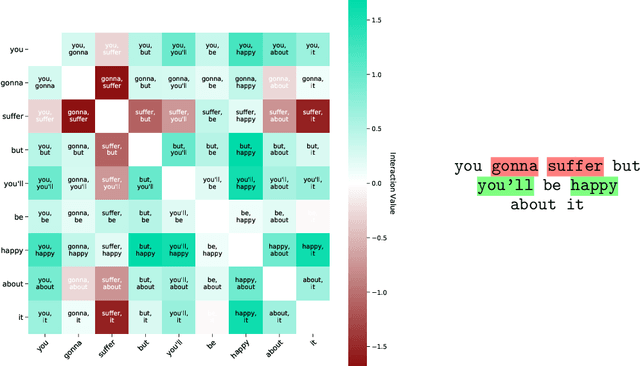
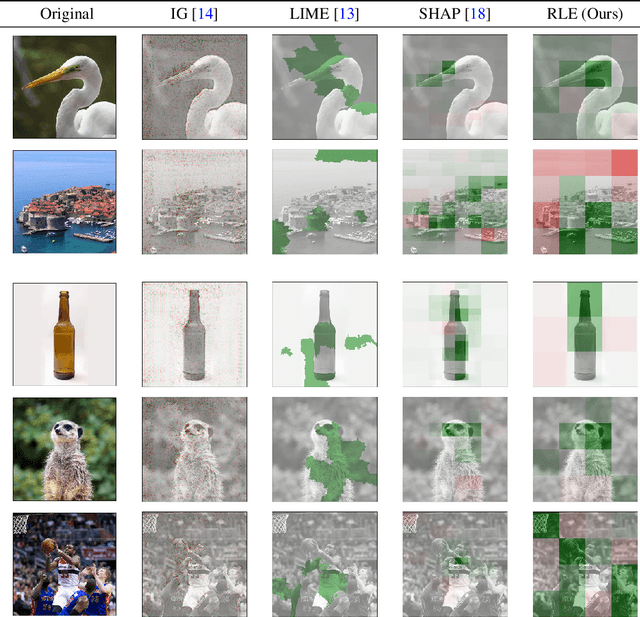
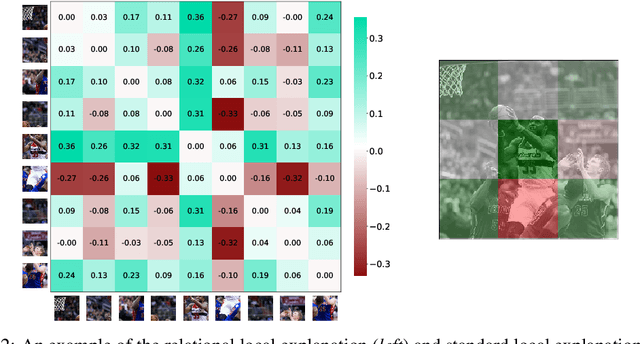
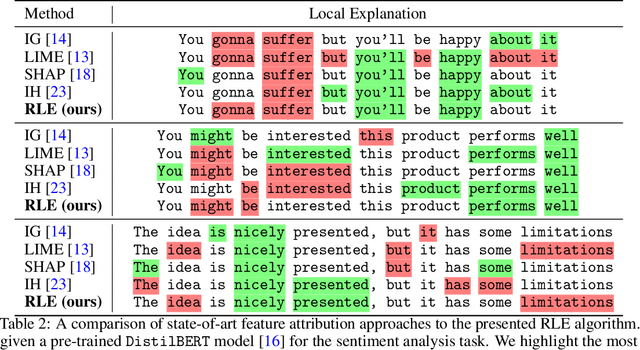
Abstract:The majority of existing post-hoc explanation approaches for machine learning models produce independent per-variable feature attribution scores, ignoring a critical characteristic, such as the inter-variable relationship between features that naturally occurs in visual and textual data. In response, we develop a novel model-agnostic and permutation-based feature attribution algorithm based on the relational analysis between input variables. As a result, we are able to gain a broader insight into machine learning model decisions and data. This type of local explanation measures the effects of interrelationships between local features, which provides another critical aspect of explanations. Experimental evaluations of our framework using setups involving both image and text data modalities demonstrate its effectiveness and validity.
Language Models are Realistic Tabular Data Generators
Oct 12, 2022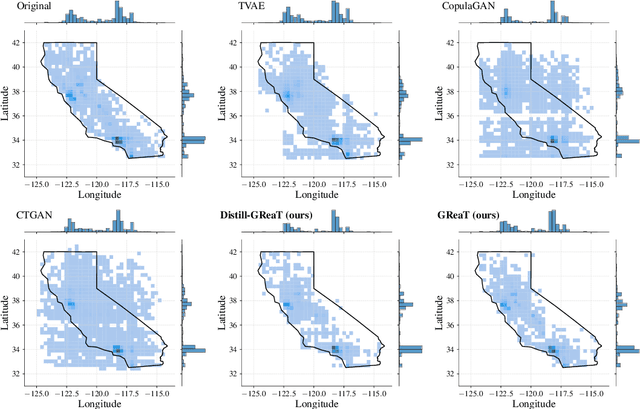
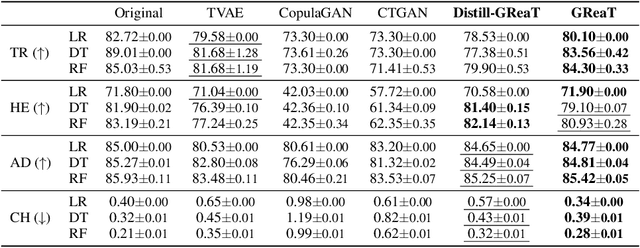
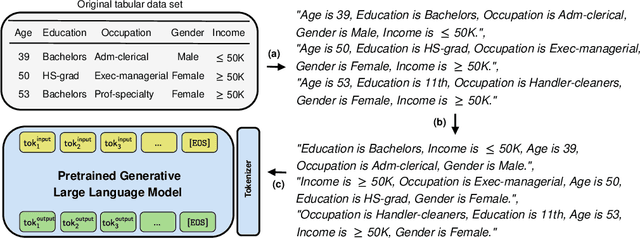

Abstract:Tabular data is among the oldest and most ubiquitous forms of data. However, the generation of synthetic samples with the original data's characteristics still remains a significant challenge for tabular data. While many generative models from the computer vision domain, such as autoencoders or generative adversarial networks, have been adapted for tabular data generation, less research has been directed towards recent transformer-based large language models (LLMs), which are also generative in nature. To this end, we propose GReaT (Generation of Realistic Tabular data), which exploits an auto-regressive generative LLM to sample synthetic and yet highly realistic tabular data. Furthermore, GReaT can model tabular data distributions by conditioning on any subset of features; the remaining features are sampled without additional overhead. We demonstrate the effectiveness of the proposed approach in a series of experiments that quantify the validity and quality of the produced data samples from multiple angles. We find that GReaT maintains state-of-the-art performance across many real-world data sets with heterogeneous feature types.
BoxShrink: From Bounding Boxes to Segmentation Masks
Aug 05, 2022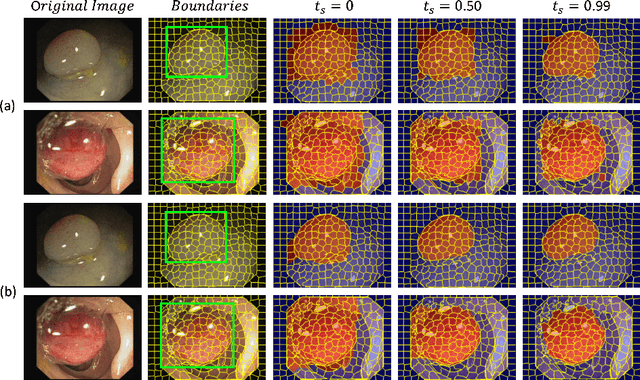
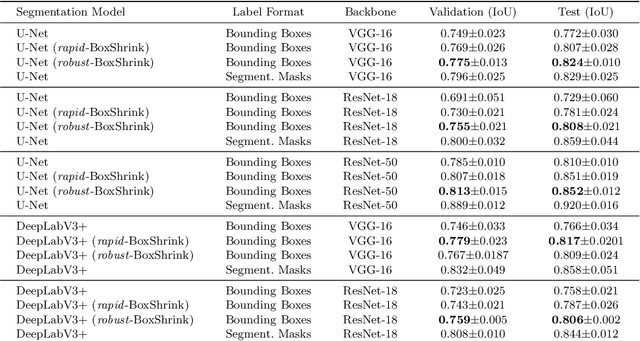
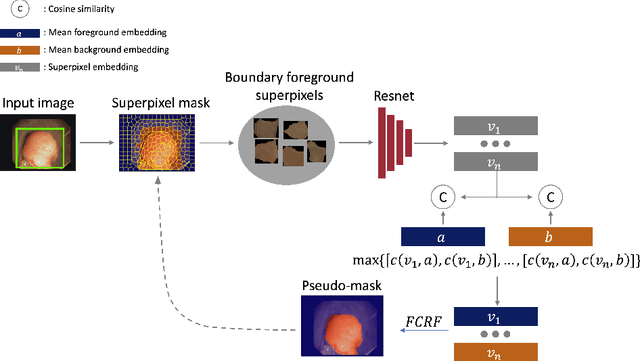
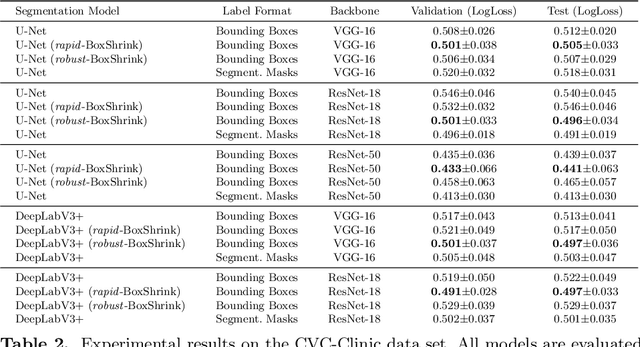
Abstract:One of the core challenges facing the medical image computing community is fast and efficient data sample labeling. Obtaining fine-grained labels for segmentation is particularly demanding since it is expensive, time-consuming, and requires sophisticated tools. On the contrary, applying bounding boxes is fast and takes significantly less time than fine-grained labeling, but does not produce detailed results. In response, we propose a novel framework for weakly-supervised tasks with the rapid and robust transformation of bounding boxes into segmentation masks without training any machine learning model, coined BoxShrink. The proposed framework comes in two variants - rapid-BoxShrink for fast label transformations, and robust-BoxShrink for more precise label transformations. An average of four percent improvement in IoU is found across several models when being trained using BoxShrink in a weakly-supervised setting, compared to using only bounding box annotations as inputs on a colonoscopy image data set. We open-sourced the code for the proposed framework and published it online.
Evaluating Feature Attribution: An Information-Theoretic Perspective
Feb 01, 2022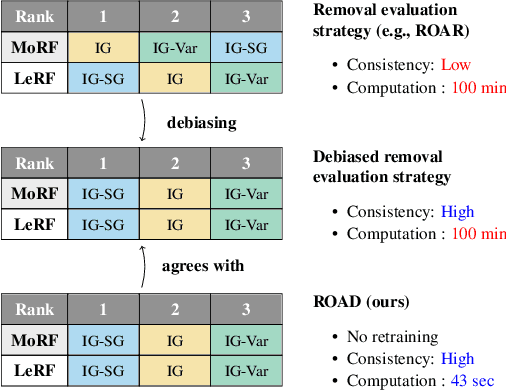
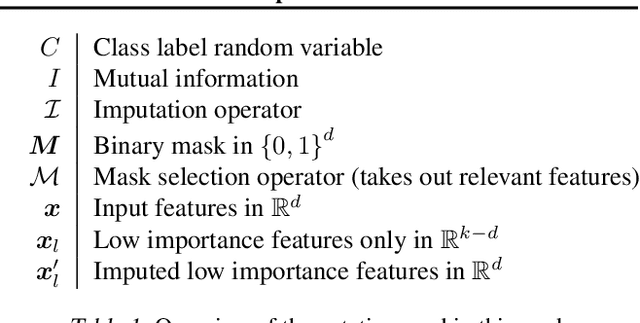
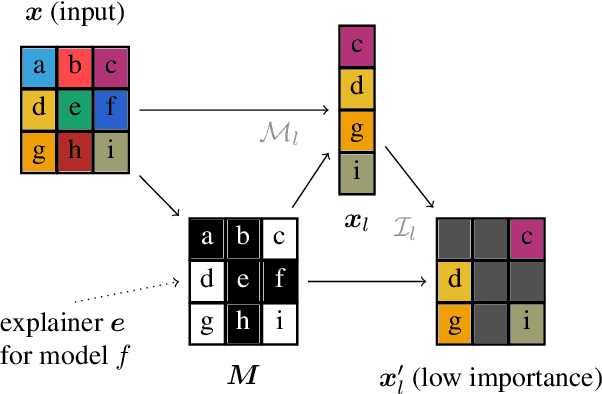

Abstract:With a variety of local feature attribution methods being proposed in recent years, follow-up work suggested several evaluation strategies. To assess the attribution quality across different attribution techniques, the most popular among these evaluation strategies in the image domain use pixel perturbations. However, recent advances discovered that different evaluation strategies produce conflicting rankings of attribution methods and can be prohibitively expensive to compute. In this work, we present an information-theoretic analysis of evaluation strategies based on pixel perturbations. Our findings reveal that the results output by different evaluation strategies are strongly affected by information leakage through the shape of the removed pixels as opposed to their actual values. Using our theoretical insights, we propose a novel evaluation framework termed Remove and Debias (ROAD) which offers two contributions: First, it mitigates the impact of the confounders, which entails higher consistency among evaluation strategies. Second, ROAD does not require the computationally expensive retraining step and saves up to 99% in computational costs compared to the state-of-the-art. Our source code is available at https://github.com/tleemann/road_evaluation.
A Robust Unsupervised Ensemble of Feature-Based Explanations using Restricted Boltzmann Machines
Nov 14, 2021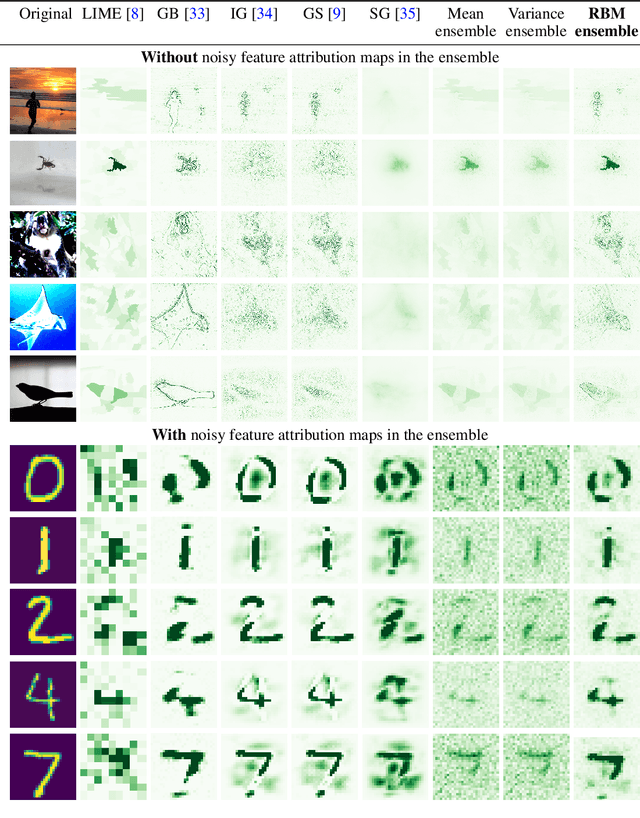
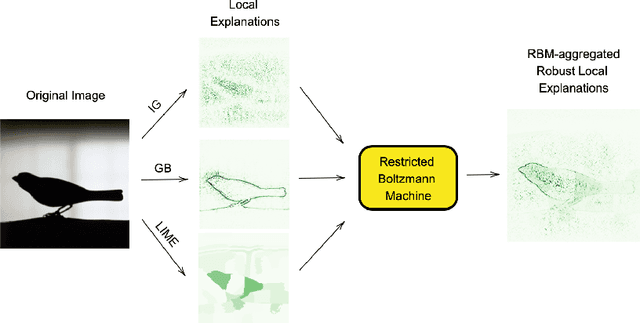
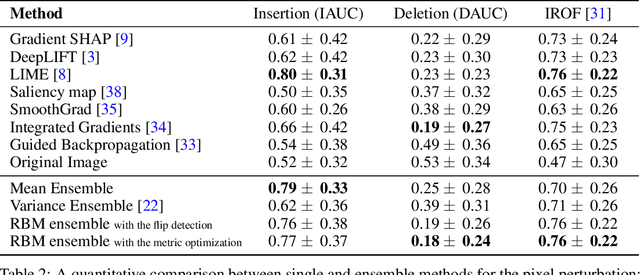

Abstract:Understanding the results of deep neural networks is an essential step towards wider acceptance of deep learning algorithms. Many approaches address the issue of interpreting artificial neural networks, but often provide divergent explanations. Moreover, different hyperparameters of an explanatory method can lead to conflicting interpretations. In this paper, we propose a technique for aggregating the feature attributions of different explanatory algorithms using Restricted Boltzmann Machines (RBMs) to achieve a more reliable and robust interpretation of deep neural networks. Several challenging experiments on real-world datasets show that the proposed RBM method outperforms popular feature attribution methods and basic ensemble techniques.
Deep Neural Networks and Tabular Data: A Survey
Oct 05, 2021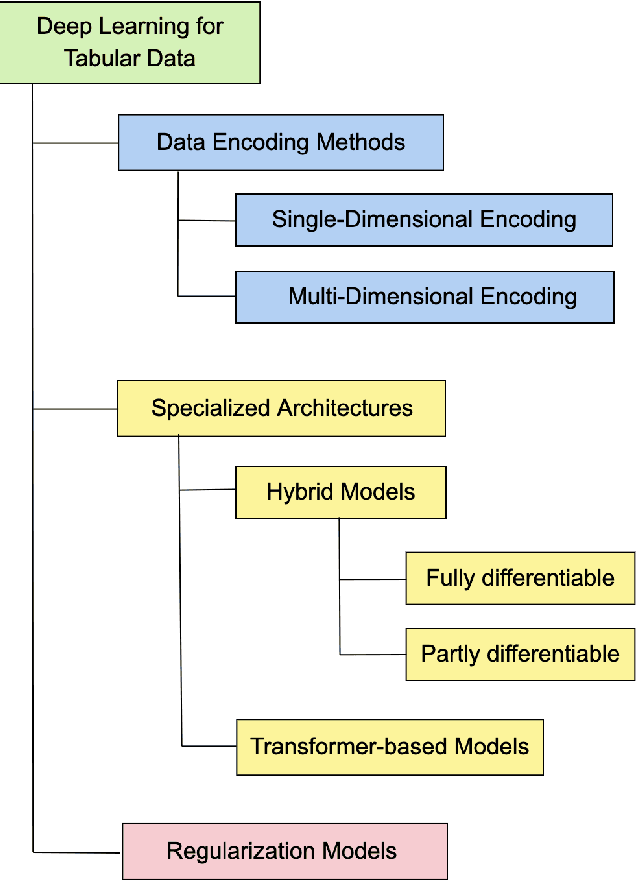
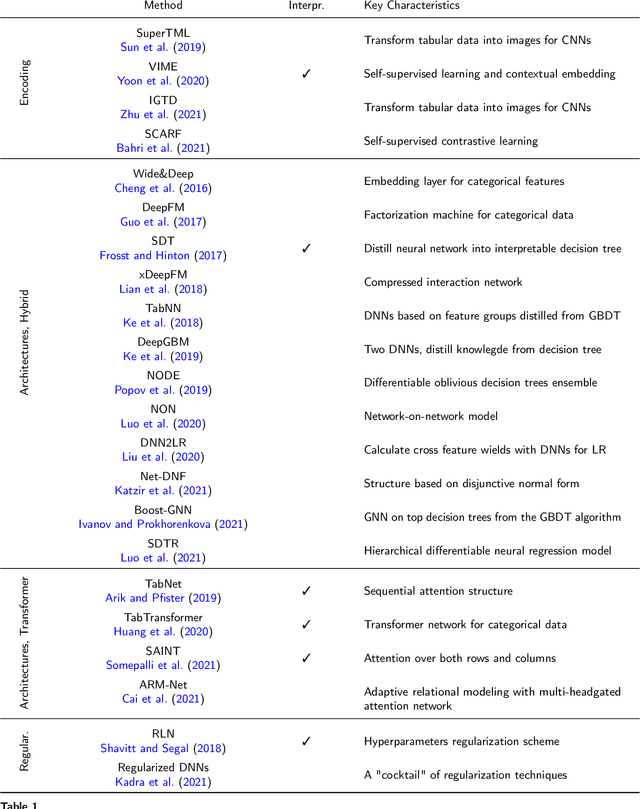
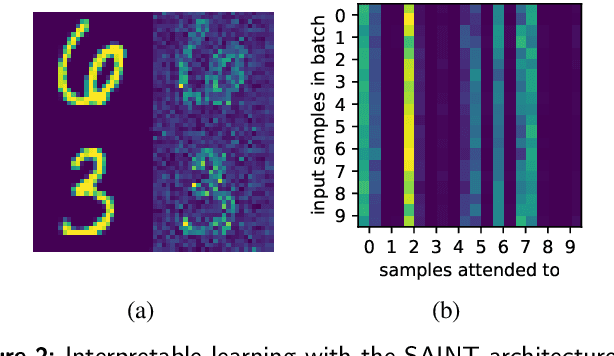
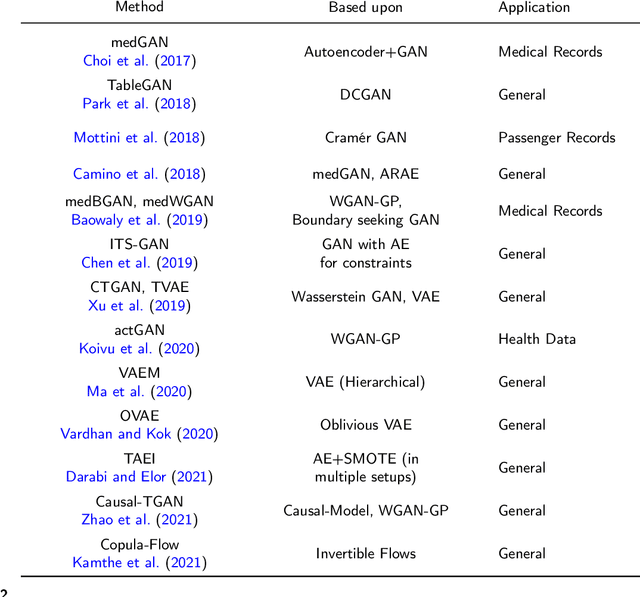
Abstract:Heterogeneous tabular data are the most commonly used form of data and are essential for numerous critical and computationally demanding applications. On homogeneous data sets, deep neural networks have repeatedly shown excellent performance and have therefore been widely adopted. However, their application to modeling tabular data (inference or generation) remains highly challenging. This work provides an overview of state-of-the-art deep learning methods for tabular data. We start by categorizing them into three groups: data transformations, specialized architectures, and regularization models. We then provide a comprehensive overview of the main approaches in each group. A discussion of deep learning approaches for generating tabular data is complemented by strategies for explaining deep models on tabular data. Our primary contribution is to address the main research streams and existing methodologies in this area, while highlighting relevant challenges and open research questions. To the best of our knowledge, this is the first in-depth look at deep learning approaches for tabular data. This work can serve as a valuable starting point and guide for researchers and practitioners interested in deep learning with tabular data.
Lessons Learned from the 1st ARIEL Machine Learning Challenge: Correcting Transiting Exoplanet Light Curves for Stellar Spots
Oct 29, 2020
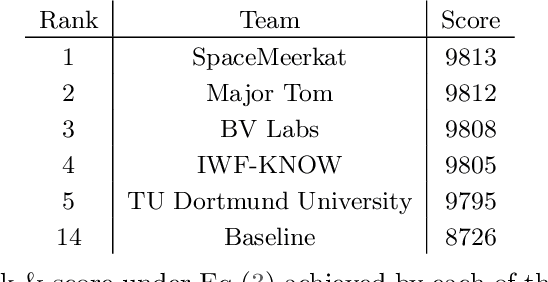
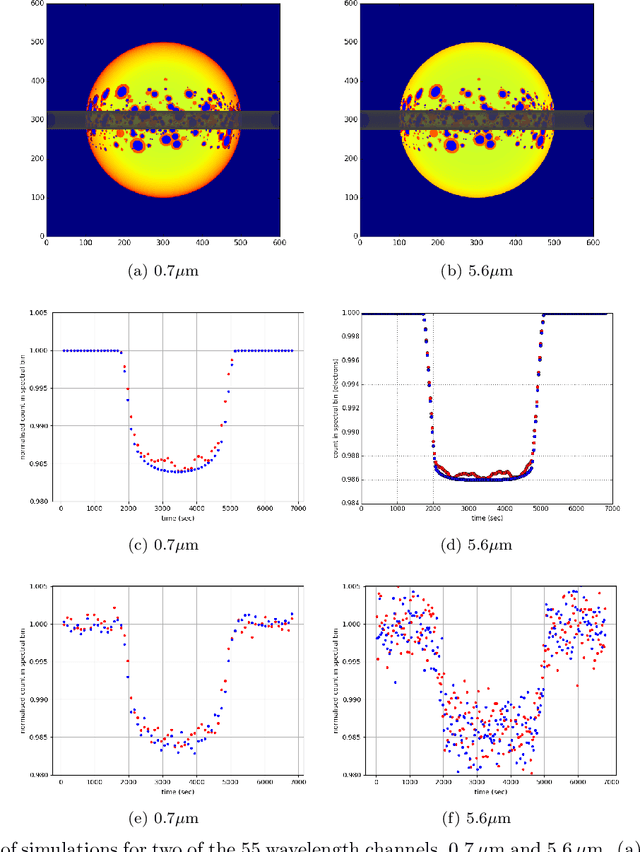
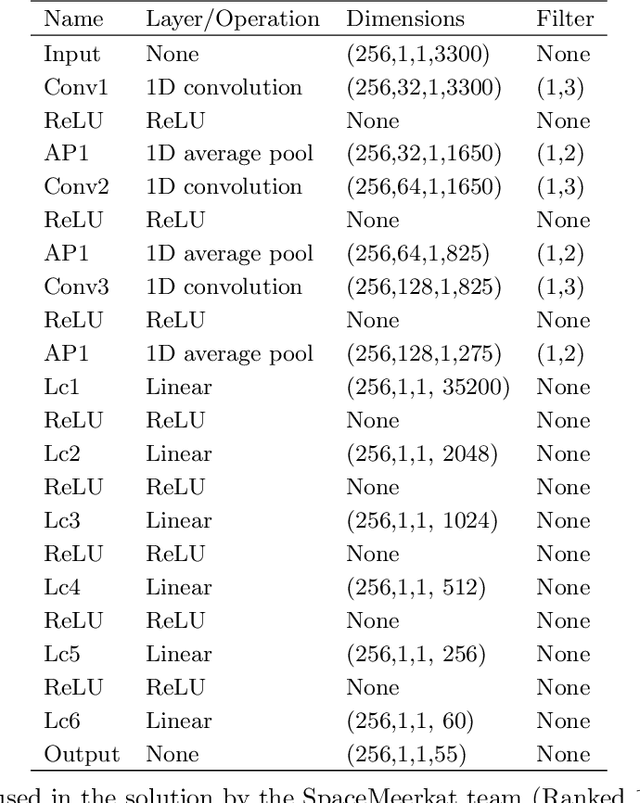
Abstract:The last decade has witnessed a rapid growth of the field of exoplanet discovery and characterisation. However, several big challenges remain, many of which could be addressed using machine learning methodology. For instance, the most prolific method for detecting exoplanets and inferring several of their characteristics, transit photometry, is very sensitive to the presence of stellar spots. The current practice in the literature is to identify the effects of spots visually and correct for them manually or discard the affected data. This paper explores a first step towards fully automating the efficient and precise derivation of transit depths from transit light curves in the presence of stellar spots. The methods and results we present were obtained in the context of the 1st Machine Learning Challenge organized for the European Space Agency's upcoming Ariel mission. We first present the problem, the simulated Ariel-like data and outline the Challenge while identifying best practices for organizing similar challenges in the future. Finally, we present the solutions obtained by the top-5 winning teams, provide their code and discuss their implications. Successful solutions either construct highly non-linear (w.r.t. the raw data) models with minimal preprocessing -deep neural networks and ensemble methods- or amount to obtaining meaningful statistics from the light curves, constructing linear models on which yields comparably good predictive performance.
 Add to Chrome
Add to Chrome Add to Firefox
Add to Firefox Add to Edge
Add to Edge